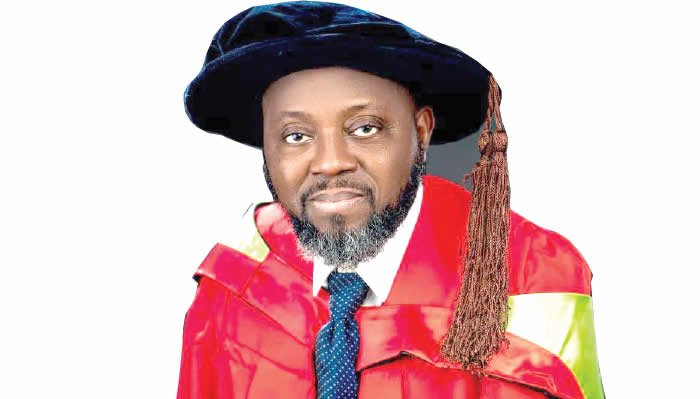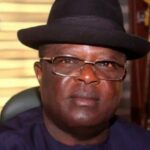
A professor of Performance Studies and Practice at the University of Ilorin, Kwara State, Jeleel Ojuade, tells ALEXANDER OKERE about his passion and career in dance study
When were you appointed a professor and what did that attainment mean to you?
The announcement of my appointment as a professor was made in 2019 at the University of Ilorin, Nigeria, and backdated to October 2017. The chair meant a lot to me in so many ways! It was a clear affirmation of hard work, resilience, pertinacity, perseverance, dedication, diligence, tenacity et al. In the practice and research of a pioneering indigenous Yoruba cultural dance and music (the Yoruba Bata and Dundun). It was a confirmation of God’s support and reward for excellence in one’s chosen career. What a beautiful way to reach the topmost echelon in dance scholarship and practice!
What were some of the funny or strange reactions you received when you were elevated to the rank of Professor of Dance?
Well, it was a long-awaited elevation that quite a number of my family members, friends, colleagues and students were patiently standing by to receive. However, some considered it funny or strange to get a chair in Performance Studies and Practice with an emphasis on dance.
Is it strange to you?
It isn’t really strange to me when people comment negatively about the dance profession any longer. I grew up to develop a thick skin and was encouraged by my late father who taught me never to be bothered by the oozing noises from a marketplace, but rather concentrate on the reasons why I’m at a place at a particular point in time. So, it was a mixed emotion from the public but a mission accomplished for me.
Many Nigerians still see dance and, indeed, the performing arts as a less-serious field, when compared with the academic rigours involved in related fields. What’s your reaction to that?
I consider such people and their attitudes as being myopic. Dance study entails thorough research which covers dance history, ethnochoreology, dance theory, dance anthropology, dance culture, and dance science (which is the scientific study of dance and dancers, as well as the practical application of scientific principles to dance, similar to sports science). Performing Arts, in a broader sense, is the medley of the three dominant areas of the arts, namely music, dance and drama. It is a form of creative activity that is performed or staged in front of an audience.
I see people who react in this manner as not being well-equipped about the modus operandi of theatre and performance. What constitutes a final product to be staged in front of an audience at a designated place is a byproduct of rigorous research, rehearsal, detailed attention to different aspects of the human endeavour being projected, and brain-tasking on the parts of both the crew and cast. In all these, dance singly comes out as the most technical in presentation or practice. Dance, being a ‘non-verbal communication arts,’ relies largely on movements or ‘in motion.’
The dance profession can be likened to the medical profession. In fact, medical practice, at times, gives room for the observation of patients based on the treatment being administered but dance is instant. In dance, a good dancer is judged as the performance progresses based on his or her mastery or expertise and interpretation of the accompanying music.
Dance, as a professorial specialty, does not seem common in the Nigerian university system. Why exactly did you settle for it rather than Music or Drama as a major area in Performing Arts?
You are absolutely correct that the dance chair in the academia is rare. This is due to the technicalities of the profession. I mentioned during my inaugural lecture at the University of Ilorin, Nigeria, in November 2021, that my involvement or entanglement with dance, I daresay, is accidental and providential. My case is that of an observer turned participant. I had my debut as a barely four-and-a-half-year-old toddler. It was at an event where my late father’s performing troupe was invited. My curiosity to see or understand that ‘language of the drum’ at that dancing arena led me to the real ‘dance theatre’ from the sidelines where I was placed to sit quietly and watch the dance. Instinctively, the little boy innocently strolled in, jumping up and down to the rhythm of the Dundun drums.
I got introduced to that world at a tender age and was nurtured as a family trade, with a penchant for our traditional Gese and Bata dance idioms. Growing up as an itinerant ‘strolling’ dancer strengthened my interest and further exposed me to our dance culture. My academic foundation in the Performing Arts with bias in drama further exposed to me the innate beauty in dance and music in productions. It was a motivating factor for me to return to dance studies at graduate levels (master’s and doctorate). I discovered at those levels the ‘uncommon’ nature of the specialties in that field in Nigeria and globally, which further propelled my quest for knowledge in dance.
You were said to have been part of the troupe that participated in the Second World Black and African Festival of Arts and Culture held in Nigeria in 1977 as a child dancer. Looking back, what were the fond memories that shaped what you have become today?
As a child barely eight years old back then, the most striking one was the assemblage of different culture and ethnic configurations with aesthetically pleasing dance performances devoid of differences in religion, colour, tribe, language, geo-political zones, and so on. Before that year, I had occasionally observed at close range some dances from different parts of Nigeria during competitions but after FESTAC 77, it brought about more and regular dance escapades at the local, state, and the centre (which was Lagos as the capital of Nigeria then). It went on all through the ’80s and early ‘90s that during October 1 of every year, states would send to the National Theatre of Nigeria in Lagos the best of their troupes to represent them in performances commemorating the independence of Nigeria. What brought about an end to that ‘culture’ is still a mystery to me today. Quiet unexplainable!!!
Your mother did not initially support your love for dance. What convinced her that you wanted a career in that area?
Yes, my mum vehemently opposed my love for dance and subsequently me creating a nest career-wise in the arts of performance unapologetically. She wanted me to study Law ab initio but my dad, of course, pitched his tent with the arts (dance). I’m sure that her conviction was borne out of the numerous achievements recorded within a short period. Within the ages of four and 14, I had taken part in numerous performances at the local levels and state levels. I even travelled to Australia and South Korea to represent Nigeria in a dance theatre performance as a member of the then National Theatre of Nigeria. The climax was in 2010 at the University of Ibadan, Nigeria, when I got my PhD in Dance Studies and Practice at the Institute of African Studies. The crowning achievement was that of Thursday, November 11, 2021, at the University of Ilorin, Nigeria, where she sat majestically to listen to my presentation of the 208th inaugural lecture in the series. Unfortunately, my dad who toiled so hard in laying the foundation, was not alive to witness the ceremonies. Today (February 16, 2022) makes it nine years since he left this world. C’est la vie.
What is it about dance that makes it a rich subject of research and what are the different areas of Dance that researchers have focused on?
Dance encapsulates the totality of human existence in life. It reflects the society in which it exists. It simply reiterates the fact that ‘there is no dance for dance’s sake in Africa’. There is always a history attached to any dance forms, styles, or expressions in performance, whether it is in the ritual, religious, traditional, modern, or entertainment contexts. There is always a face and meaning to such adroit movement and displays. Dance studies and practice provides wide-ranging areas of research opportunities that are unique within the environment where students can explore, create, perform, analyse and investigate dance arts from experiential, historical, philosophical and scientific perspectives.
Many Nigerians would wonder what impact the outcome of such research could have on Nigerian society. What can Nigeria learn from the developed world in this regard?
Such research, when completed, forms part of the required documentation of our histories. It makes it more authentic if we tell our stories ourselves, rather than a tinted version as observed in a passage or during a short visit. We live our world and our culture is a significant part of our living. Nigeria, as a coun try, can learn a lot from developed countries of the world, particularly in terms of organisation, research and documentation centres, creation of cultural archives and materials in strategic locations, policy formulations on arts-related fields, formation of formidable tourist centres, and propagation of culture in different tiers of governance, among others.
Dance has evolved globally over the years. What factors have contributed to the changes?
What readily comes to mind includes the drive and influence of globalisation, extensive research activities involving organised seminars, talks, workshops, conferences and others, and organised performances locally, within and outside the academia. Global dance phenomenon will further expose the dance culture of a people to the outside world making them attain the status of being ‘international’ whereby the dances can operate in locations different from their birthplaces. Research, on one hand, clearly illuminates the culture of a people and places them on global maps for extensive readership, while performances show the physical assessment of various dance genres and gives the opportunity for participant-observer approaches.
How would you assess Nigeria’s contribution to this?
Nigeria’s contributions towards global dance evolvement are horrendous. The dwindling nature of support by the government at the different tiers of governance and particularly at the federal level is worrisome. Government attention is unnecessarily shifted to politics and not the culture that breeds human existence and survival. Interestingly, Nigeria is populated by over 200 million people spread all over about 500 ethnic configurations in different geo-political zones. Beneath these ethnic groupings lie untapped dances of varying forms, styles, typologies et al., which if well harnessed are formidable sources of revenue generation to reshape our shrinking economy. Dances are not limited to entertainment alone. Even at that and if well funded and managed for some time, it will yield income on such an investment.
What we see of dances in Nigeria today are self efforts by researchers and practitioners, spending their hard-earned money to project the images of Nigeria within and outside the country through research and performance activities. Institutional research is at the mercies of government agencies and parastatals to fund their research proposals, organise lectures, symposiums or stage performances. There is a need for budgetary allocations to address the earlier mentioned factors.
Despite the changes dance has undergone, it would seem types of dance in Nigeria and globally have survived through centuries while others have gone extinct. What do you think is responsible for this?
There are major factors that are responsible for the survival and extinction of dances in Nigeria and globally, some of which are cultural, social, economic, political, religious and often the stories or histories behind the dances. It all depends on applications and usage. In addition, lack of adequate information about the dances portends restrictions whereby some of them are categorised as ritual or bestial.
You have a special interest in Yoruba Bata and Dundun dances. What triggered your interest in those areas?
I was born into these dance forms and grew up with them. My late father took particular interest in these two indigenous traditional dances, the Yoruba Bata and Dundun, and created fame out of it. All these keep resonating in my mind as I was growing up, coupled with exposure attached to it, meeting people of diverse cultures through performances, learning culture of others, going places (through travels) and of course, my father’s love for the arts, especially dance arts, enforced my focus on dance culture and practice.
Based on your expertise, how would you classify dance forms in Nigeria, like ‘leg work’ (‘zanku’), ‘shaku shaku’?
Nigerians are highly creative and most of the styles in vogue are creative inventions of the dancers. Such inventions are attributed to their body reactions to the accompanying drums in performance. For instance, a good drummer meeting a good dancer in a dance arena or ring brings forth an ecstatic moment to treasure.
Some people consider these dance steps as ungodly and even criticised a gospel artiste for dancing ‘leg work’. Some fear that such dance styles may have bad influence on children. What is your thought on that?
‘Leg work’and ‘Shaku Shaku’ are not devilish but creative works of art. Those are dance types and naming a dance depends on one’s creative ingenuity. It is just like a musician giving a title to their work. We are bothered about the content, not the name or title.
Would you say the same about twerking?
Morally, that is an irrelevant movement done for the purpose of seducing and not for ritual, sacred or entertainment purposes.
What does criticism in dance entail?
Dance criticism is beyond making ‘ordinary’ statements about creative works of art. It entails the descriptive analysis of a performance that is printed, broadcast, or transmitted electronically. It is an act of producing a written or spoken review of a dance performance. To correct the sprouting anomalies in dance, the Association of Dance Scholars and Practitioners of Nigeria, of which I am currently the President, has taken the lead in situating our dances appropriately through analysis of well-researched topics with thematic captions in the last eight years for presentation during our organised conferences.
The 8th annual international conference comes up between March 9 and 12, 2022. The theme is ‘COVID-19, Insecurity and Dance Practice in Nigeria’. It would be hosted by the Department of Theatre Arts and Music, Lagos State University, Ojo, Lagos. The keynote address at the opening ceremony will be given by the Nobel Laureate, Prof Wole Soyinka, while Prof Mariam Asabe Iyeh and I will present the lead papers.
You called for the creation of a dancing hub by the Federal Government. What exactly do you mean and would that do for Nigerians and Nigeria?
It was one of the recommendations offered during my inaugural lecture that the government should establish dance hubs at different strata of societies. It will generate revenue from tourists and a training centre for the people. This recommendation sprang up out of the experiences garnered through organised events by individuals, corporate bodies and, in some cases, states. For example, the African Drum Festival organised by the Ogun State Government, the Calabar Carnival organised by the Cross River State Government and the Argungu Fishing Festival in Kebbi State are a few of the events that parade huge numbers of our ethnic dance and music where you can see raw talents on display. Rather than these annual events, it would be plausible for the government to create hubs at different tiers of governance to be able to bring together, train the youths and would-be performers. Those interested would be able to register with the dance hubs through a dedicated account, attend classes (physically and online), and get certified. The people would have the privilege of knowing their dances, while the studios there would contain archival materials in storage form for use by researchers and scholars globally. Of course, the hub would engage our youths and interested would-be performers while the government would generate revenue through the hubs.
Copyright PUNCH.
All rights reserved. This material, and other digital content on this website, may not be reproduced, published, broadcast, rewritten or redistributed in whole or in part without prior express written permission from PUNCH.
Contact: [email protected]





